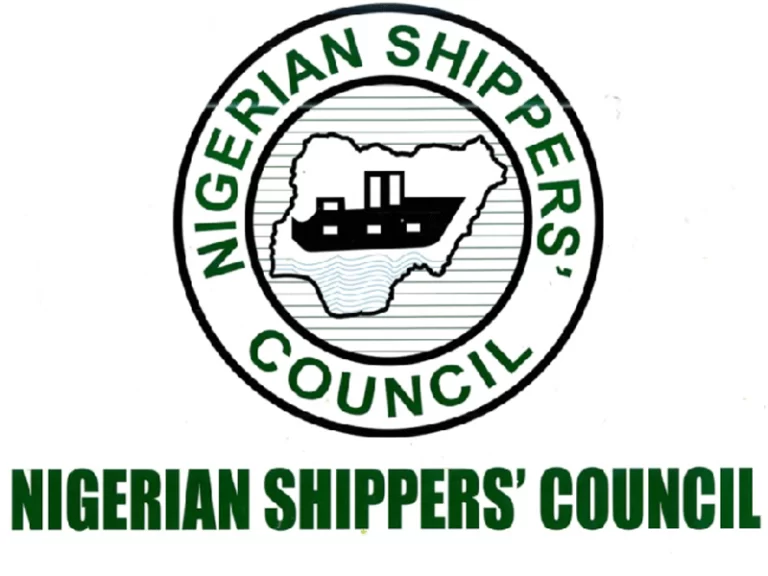By Steve Agbota
The Nigerian Shippers’ Council (NSC) has lamented the lack of a functional rail system for evacuating cargo from seaports to various distribution centres in the hinterlands across the country.
However, the NSC described the situation as a significant issue for the shipping industry and the ease of doing business.
The Executive Secretary/Chief Executive Officer of NSC, Pius Akutah, pointed out that this deficiency has led to congestion at the seaports, delays in vessel offloading and turnaround times, increased demurrage payments, a rise in the number of trucks and tankers on the roads, traffic gridlock, and a higher cost of doing business.
Akutah stated this on Thursday during a one-day stakeholders’ sensitisation summit organised by the Nigerian Shippers’ Council on “Limitations to Rail Transportation of Cargo in Nigeria held in Lagos.
During the event, the NSC also signed a Memorandum of Understanding (MoU) with the Nigerian Railway Corporation (NRC) aimed at revitalising rail transport for the efficient carriage of cargo from seaports to Inland Dry Ports (IDPs) and hinterland areas.
Akutah emphasised that this renewed focus on rail infrastructure aligns with the Federal Government’s objectives under the African Continental Free Trade Area (AfCFTA) agreement.
He said the government aims to prioritise export activities to improve Nigeria’s trade balance, which has historically suffered due to insufficient export growth.
Akutah explained that rail transportation is efficient, economical, cost-effective, and safe, particularly for long distances and large volumes of goods as well as reduces greenhouse gas emissions and energy consumption compared to road transportation.
He said by enhancing inland transportation infrastructure and promoting rail for cargo movement, the NSC and NRC aim to strengthen Nigeria’s competitive edge in the African market, ensuring that Nigerian goods can be efficiently transported and exported across the continent.
“This government is focusing on export to see how we can take advantage of the opportunities available to shippers in Nigeria under AfCFTA. Africa has a free market today, and the Nigerian market is open to the whole of Africa. We must act proactively to ensure that Nigeria not only participates in but also benefits from the vast opportunities presented by the AfCFTA,” Akutah said.
Speaking on the MoU, Akutah stated that both agencies would work towards enhancing intermodal connections and connectivity, expediting cargo delivery to and from the IDPs, and ensuring a cheaper, more cost-effective means of transporting goods to the hinterland, particularly the IDPs.
On his part, the Managing Director of NRC, Fidet Okhiria, stressed the importance of streamlining procedures and fostering collaboration with various stakeholders to maximise the potential of rail transport in Nigeria.
Okhiria identified key challenges affecting rail transport, including insufficient volumes of goods for transport, noting that the NRC often struggles to assemble large enough shipments to justify rail movement, citing the lengthy process it took to gather 17 containers from the hinterlands and move them from Kano to Apapa port.
He also highlighted ongoing concerns regarding delays in loading at terminals, where wagons can spend two to three days before being loaded, which he described as a “disaster.”
Okhiria said this is despite the NRC’s efforts to encourage the Manufacturers Association of Nigeria (MAN), importers, exporters, and other industry bodies to consolidate shipments and facilitate bulk transportation, these delays persist.
Okhiria emphasised the need for efficiency in terminal operations, stating that the NRC aims to ensure wagons are loaded within one hour and ready to depart within 10 minutes of loading.
He further pointed out that additional charges imposed at terminals pose a significant barrier to the adoption of rail transport, noting that a fee of N60,000 is charged per container.
He expressed concern that these special fees at terminals discourage customers from using rail transport.
Regarding the NRC’s operational capabilities, Okhiria noted the potential of the standard gauge rail system to move 35 containers at a time, with the possibility of increasing this to 70 containers using a double-headed train. The narrow gauge system can carry 20 containers at once.
